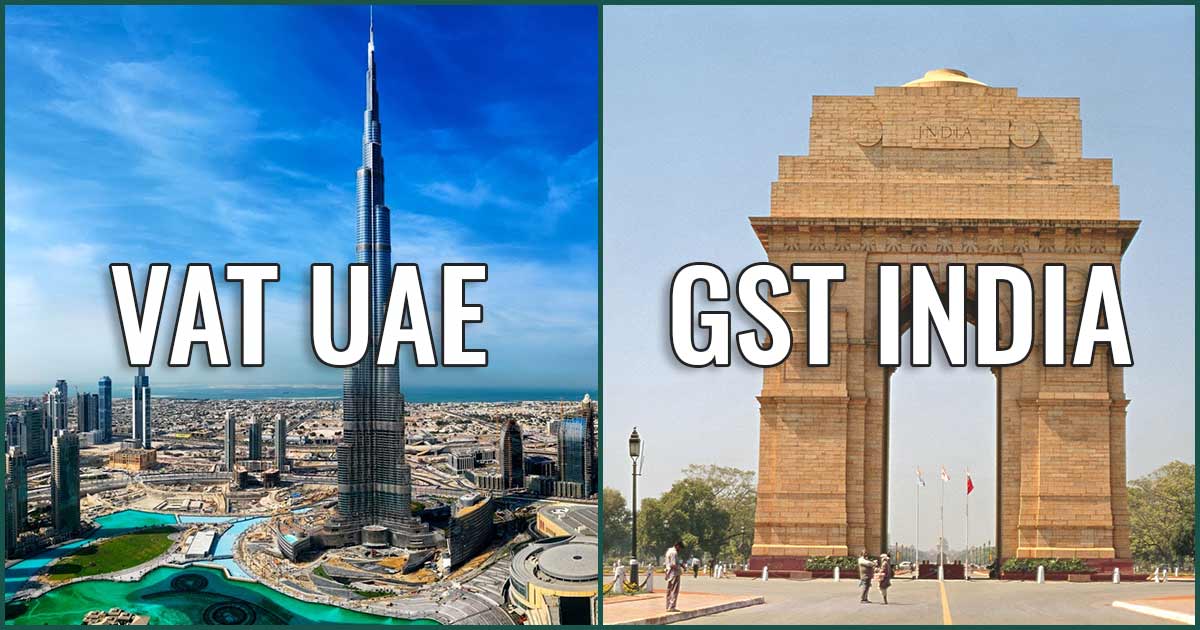According to critics, GST is badly implemented tax as it is fighting against constant changes in rates and returns. But is it a truth or reality is different or just a self-flagellation from some groups? Here is the comparison between newly implemented VAT in UAE and six-month-old Indian GST. There are somethings good in UAE VAT and some require amendment, the same is applicable to GST as well.
Features Expected From VAT UAE
Group Transactions Are Worthy
VAT UAE facilitates the group of companies under a single management to operate as a tax group and this group has only one registration number. While transacting with the company, they do not require to pay taxes. It enhances cash flow and eliminates the cost of burden.
India can also evaluate this option of grouping. For this, firstly we have to make a centralized registration of service providers like previously prevailing service tax. Companies will also not consider paying taxes under various jurisdictions as today electronic medium has made payment easy. The activation of invoice verification on GSTN portal will also favour the state government to register maximum people under GST. With the mindset change, this can also be possible in coming time.
Single Slab Rate Expectation
Under VAT UAE, all services and goods are put in a similar tax bracket of 5% rate except residential property sale, education, health, and lease services which are under zero-rated supplies. Public transportation is also exempted from the tax ambit. As per the estimation, with newly implemented VAT, the UAE government will make USD 3.5 billion in this year and USD 5.5 billion in the next year.
This estimated figure is 1-2% of UAE’s GDP. obviously, it is much lower than 11% to GDP earned by the Indian government in terms of indirect tax. But it is expected that slowly the UAE government will increase the rates in lieu to expand the revenue base like other countries did.
The second thought can be in mind that even India can start with 5% tax or some other single tax rate. India earns 65% of tax from indirect taxes only comparing with OECD countries it is high as they earn 33% of the tax from indirect taxes. As India is highly dependable on indirect tax and any tweak can shack its framework so India could not afford to start with low revenues like country like UAE.
One tax rate phenomena will also fail in India considering the country size and economic differences. Indirect taxes usually impact the rich and the poor equally so it can be reflected on the poor in a very bad manner as well. Keeping this in mind, the Indian government has included 50% and more products below 5% tax rate. The recent move of the government to short the 28% bracket also indicates the same motive of government. Although, we can think about reducing the tax rate but considering all tax rates in a single category is not a liable case for India.
A lower tax rate increases the compliance and helps the consumer with lower prices and the single rate removes the differences in classification. India will surely be missing these benefits.
Reverse Charge Mechanism in Different Form
Reverse charge concept is similar between India and UAE. But different from India, where firstly importers pay tax in cash and then get after claiming for refunds. UAE residents don’t require the importer to pay tax in cash. The tax comes into government account only when the imported goods finally sold out in the UAE. It reduces the further cash flow and India can also look at this to implement.
What’s Good In GST India?
GST laws of India are quite firm and strictly in the word format so as to make a clear interpretation idea and leave no space for several interpretations. The UAE VAT laws are short and hence limits the specificity and increase the chances of interpretation in spite of including few exemptions to tax and one tax rate. The UAE says that the Arabic version of regulation is a basic version and English version available on government official website is not considered as an official translation. The English translation version slightly varies from the basic version and further leading ambiguity and interpretation issues.
After GST implementation, the Indian government has been ready to explain the issues clearly. The size of the circulars pages turned into thousands since 1 July 2017. This indicates that the government was ready to sort out the grievances and amend them accordingly. The social media platform of India is quite active as compare to UAE Government’s twitter handle which is lacking followers as well. Social activism helps the Indian government to easily inform about 10-15 clarifications over the issue.
Recommended: New GST India vs Old VAT India: Simple Way to Describe the Differences
We have always problems with rules and notifications are being issued in the last instance of time. Same was the issue with UAE as well. In UAE, stipulated pharmaceutical products were put under zero-rated supplies when sold in UAE, but the list of such products was not introduced till mid – January, although the VAT was roll out on 1 January 2018.
Conclusion
To totalize, all UAE VAT Law is not written formally and systematically, and looking at Indian GST with slant eyes is not a good thing. Looking at economy size and diversities in classification, India is right at its place as it tried to implement GST in the best possible manner.
